Pathophysiology of gastro-intestinal tract Gastro-intestinal tract Organs of

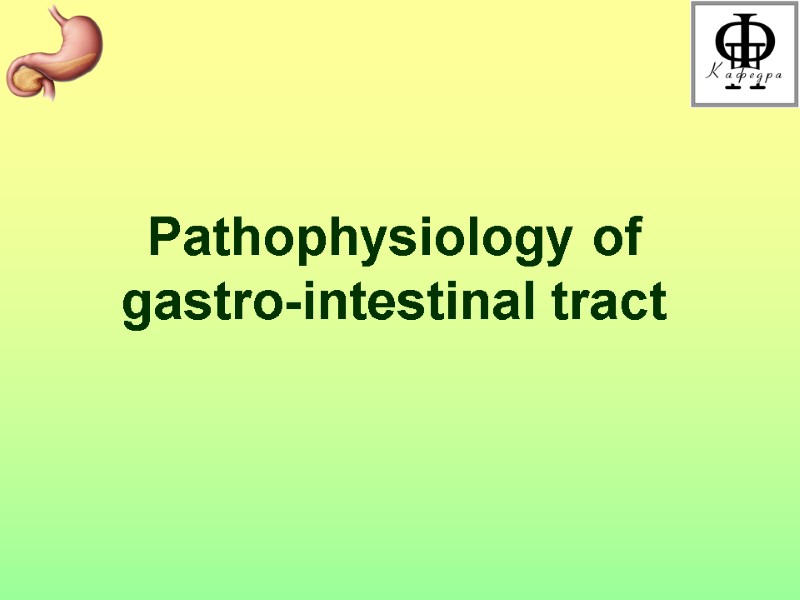
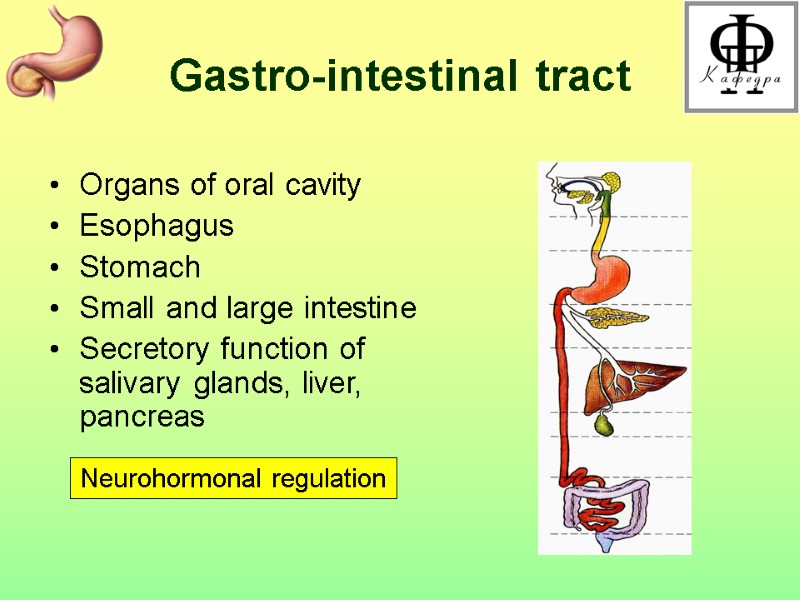
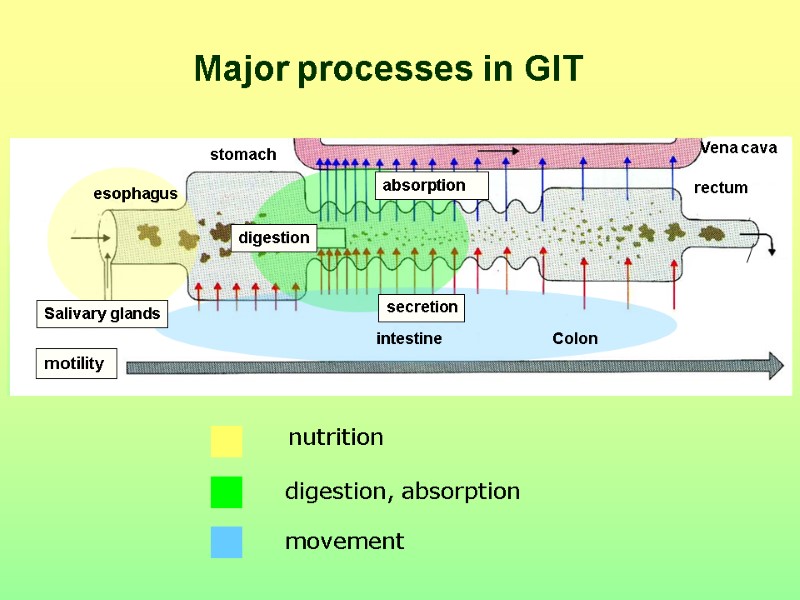
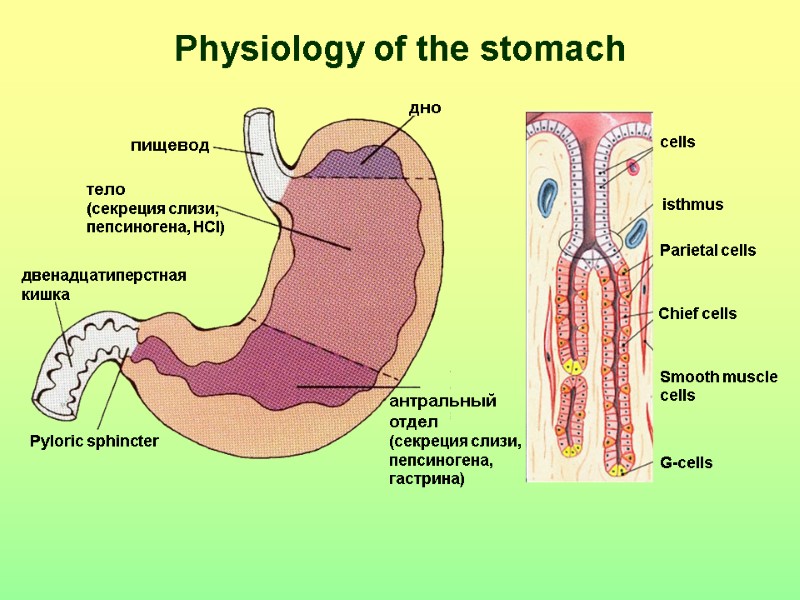
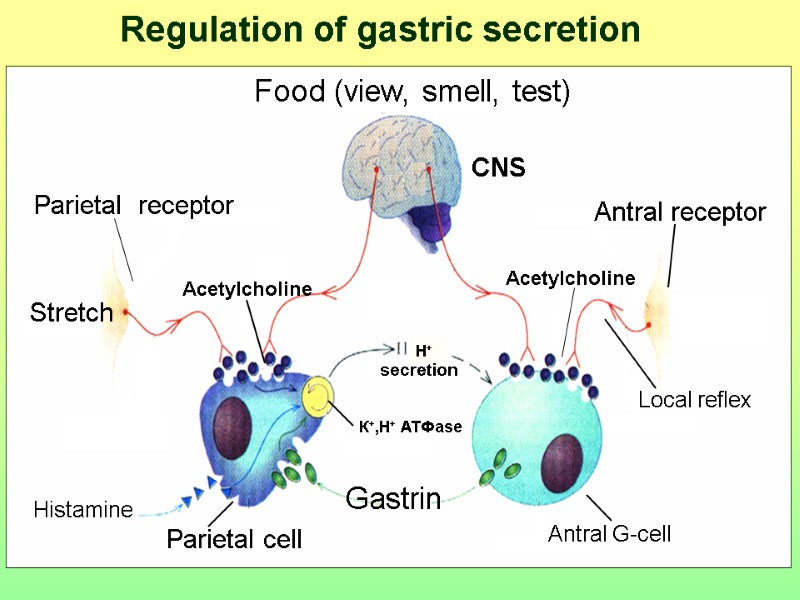
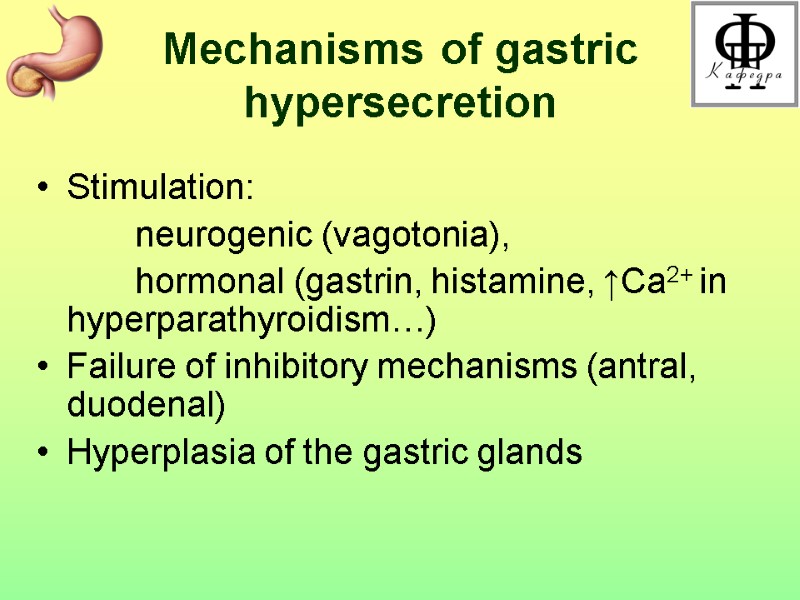
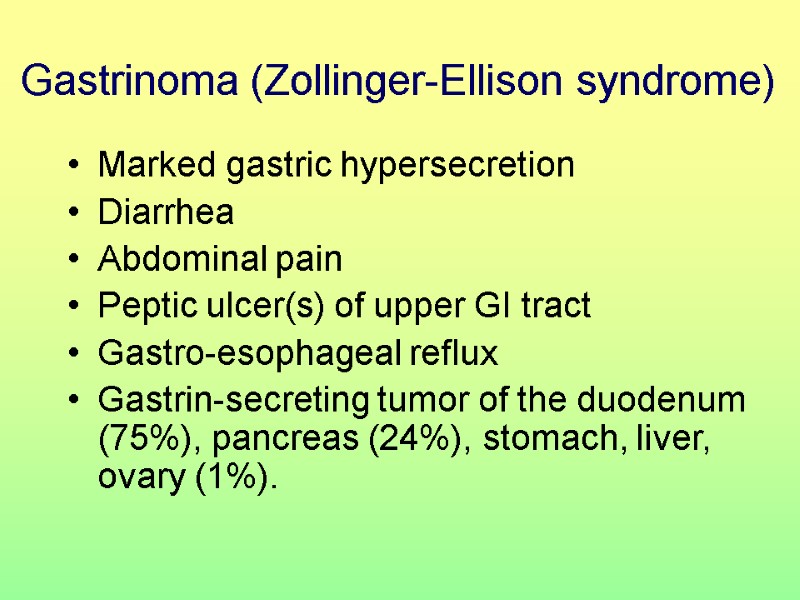
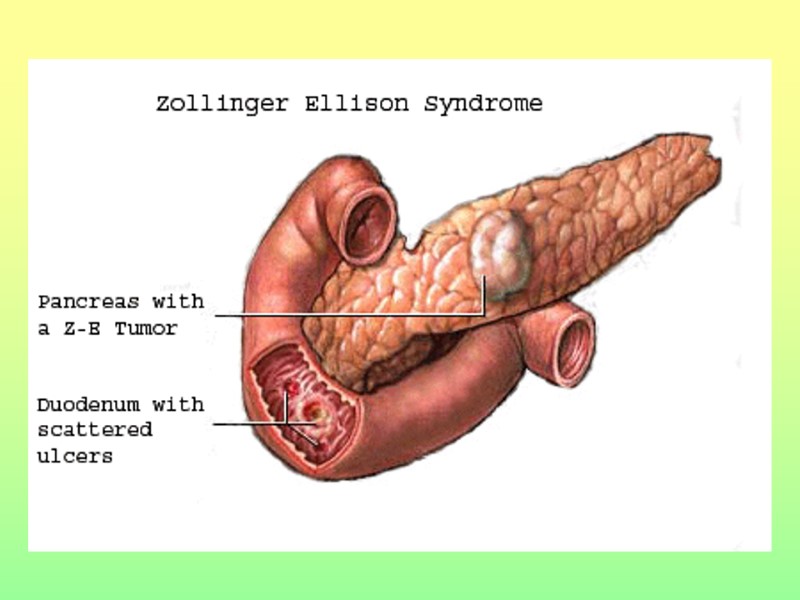
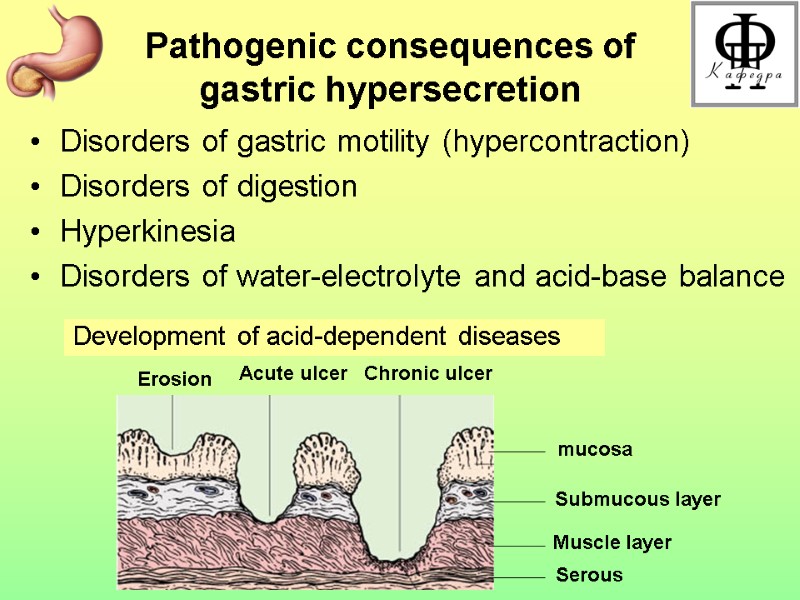
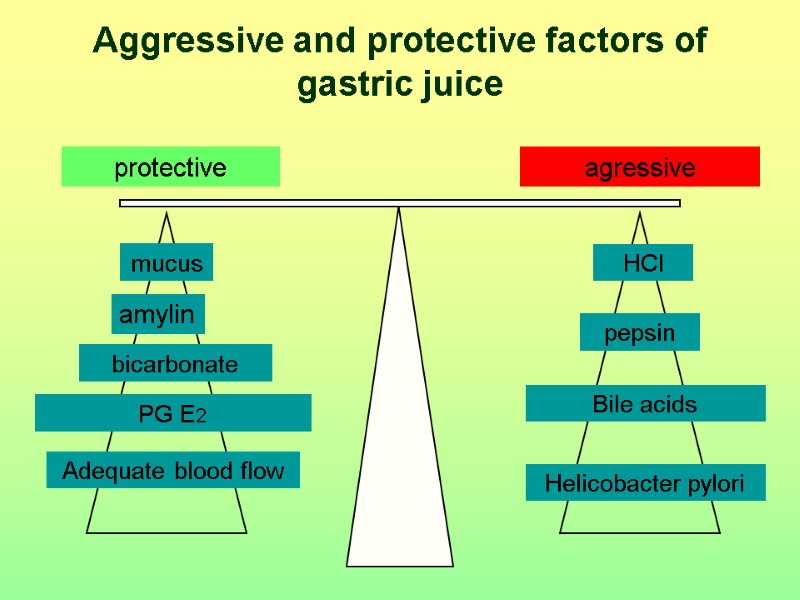
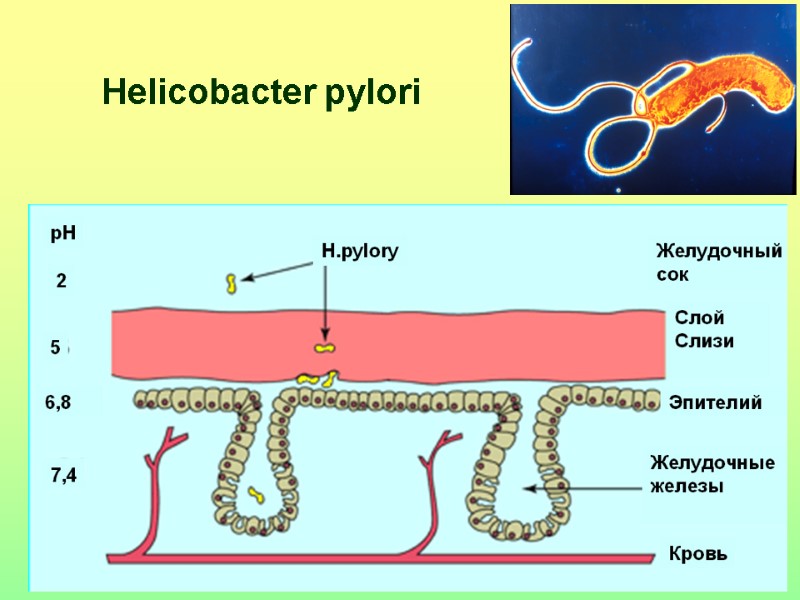
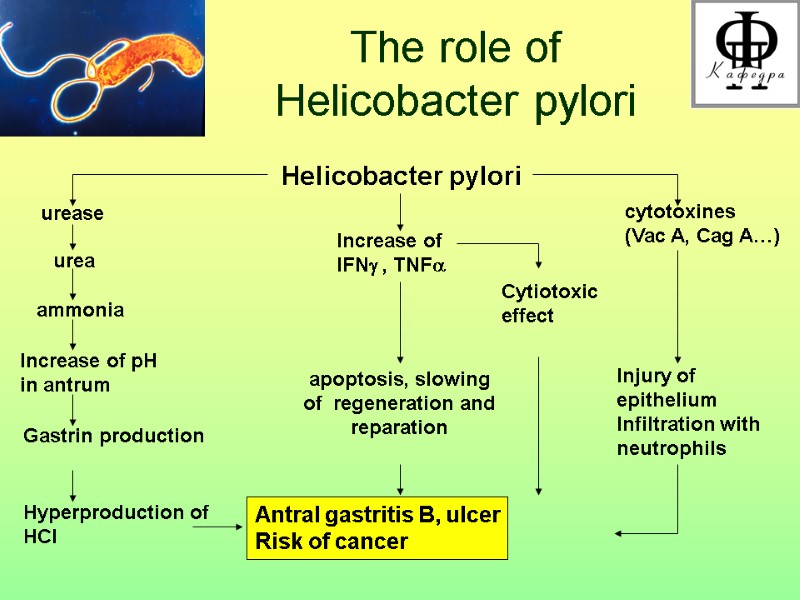
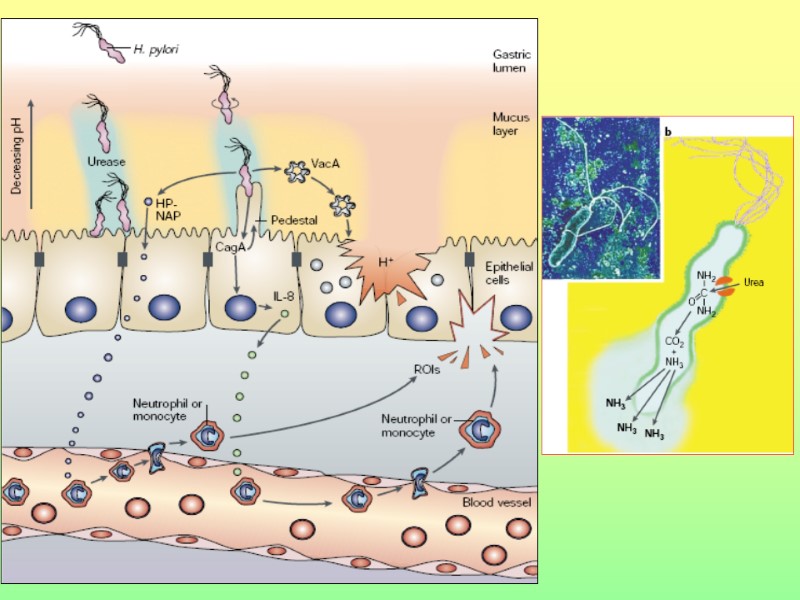
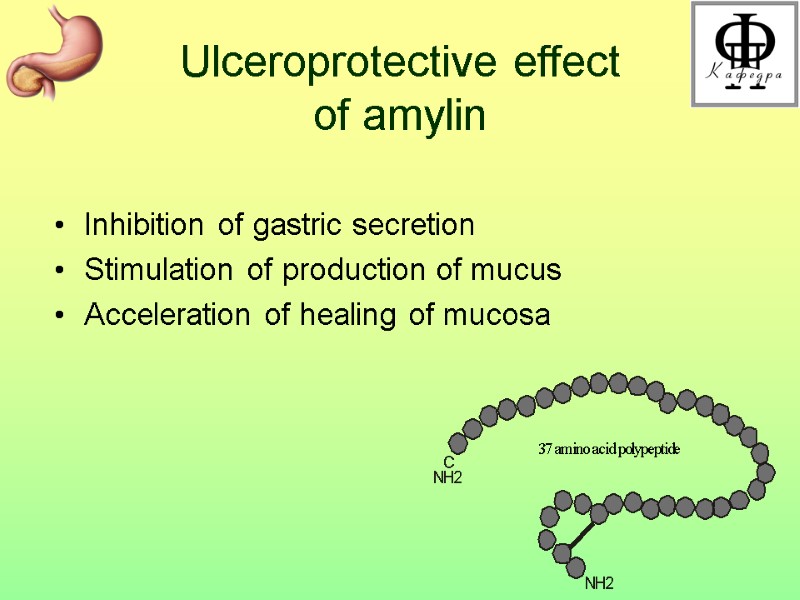
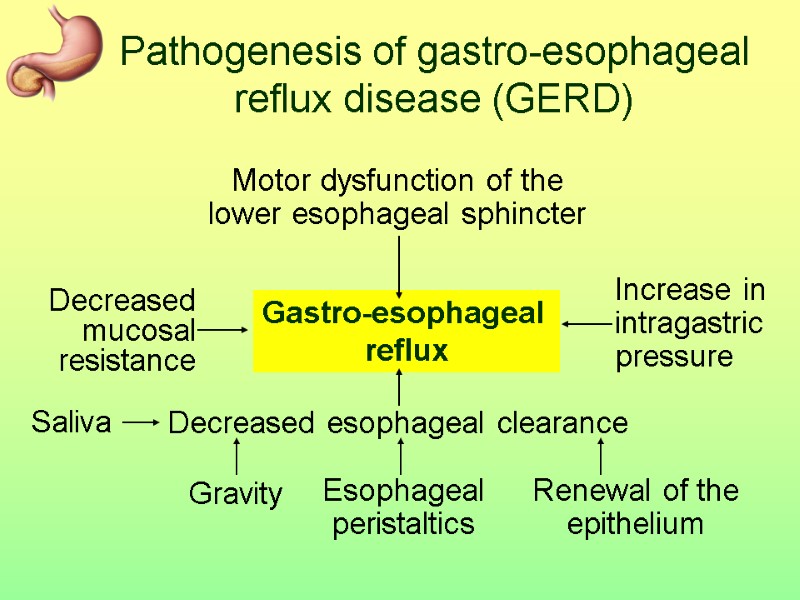
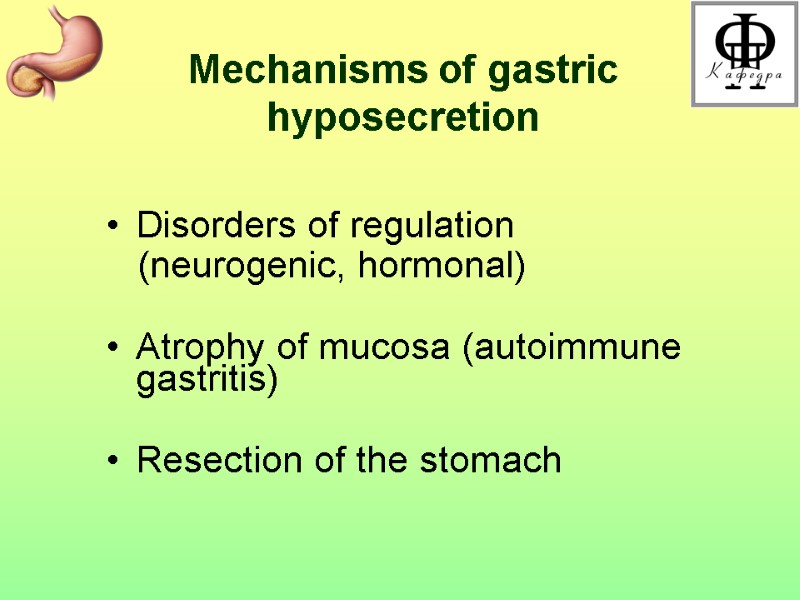
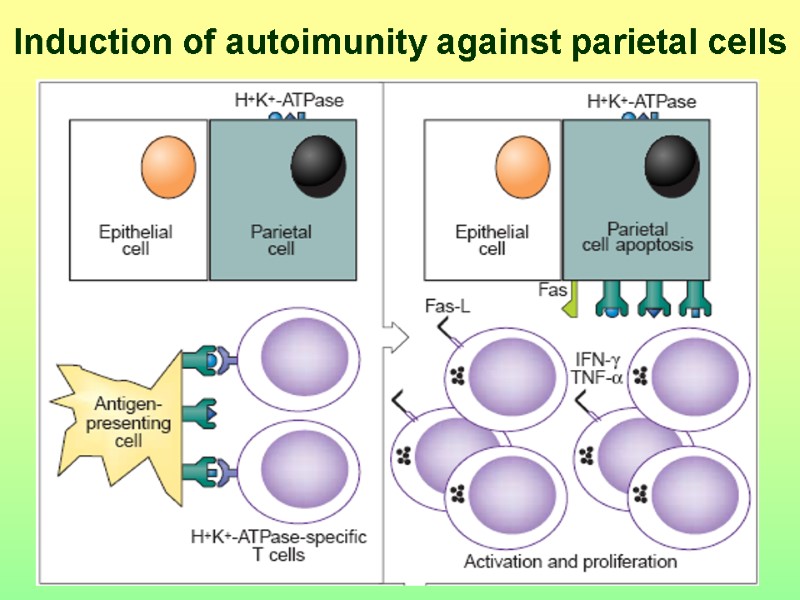
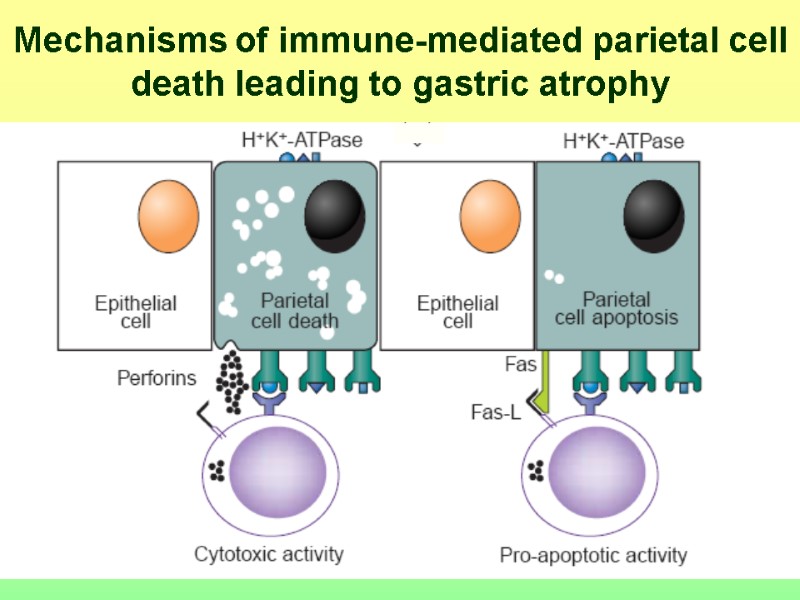
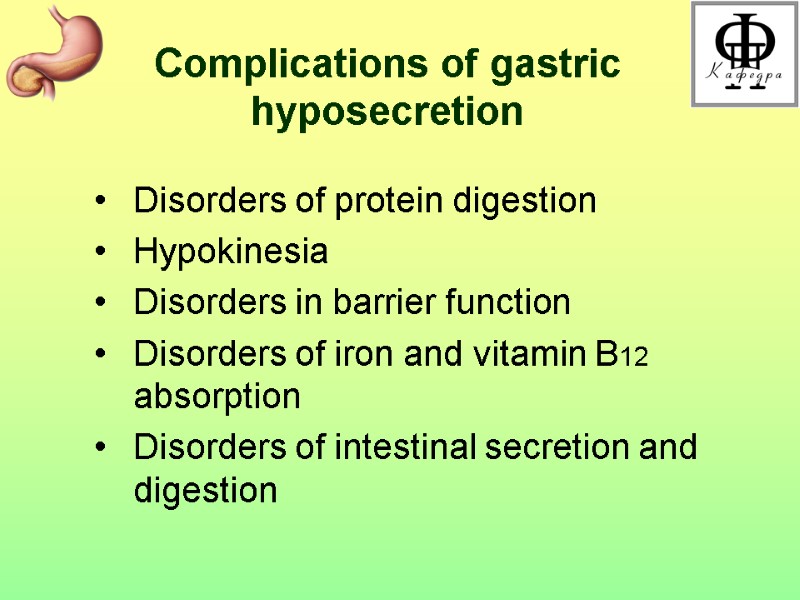
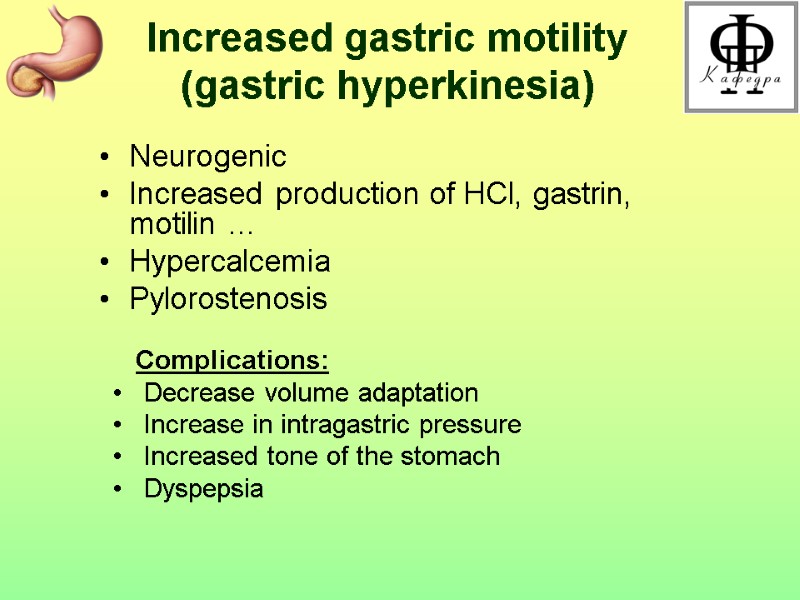
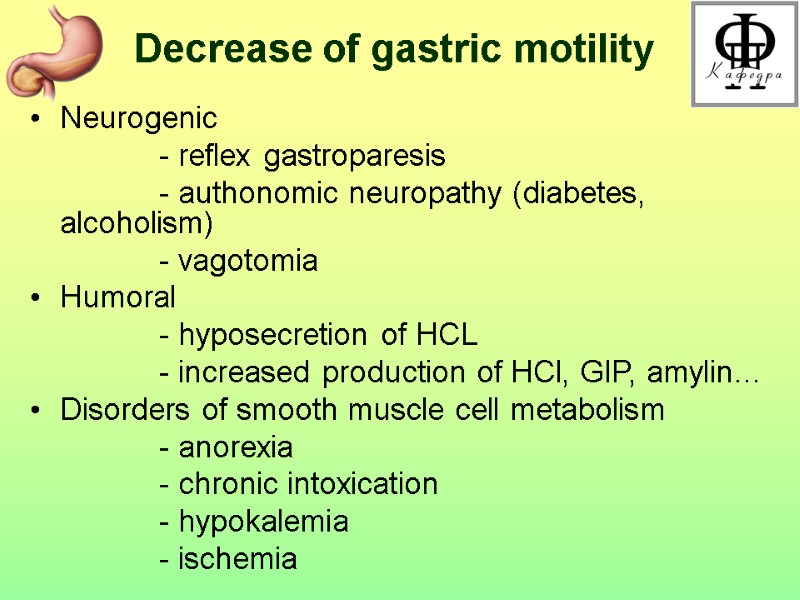
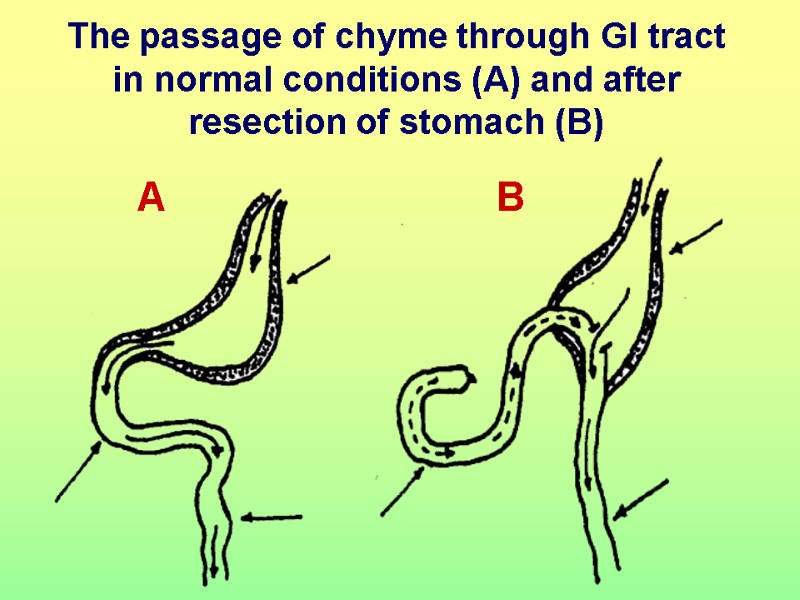
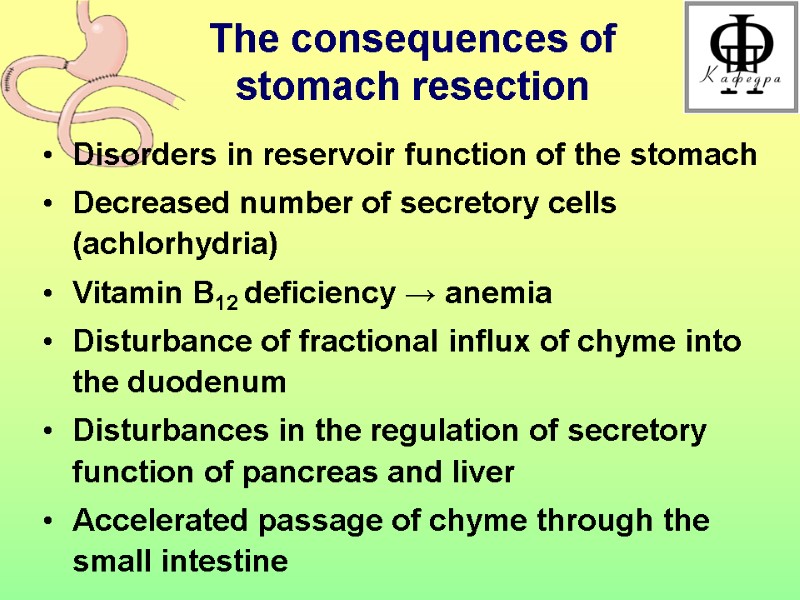
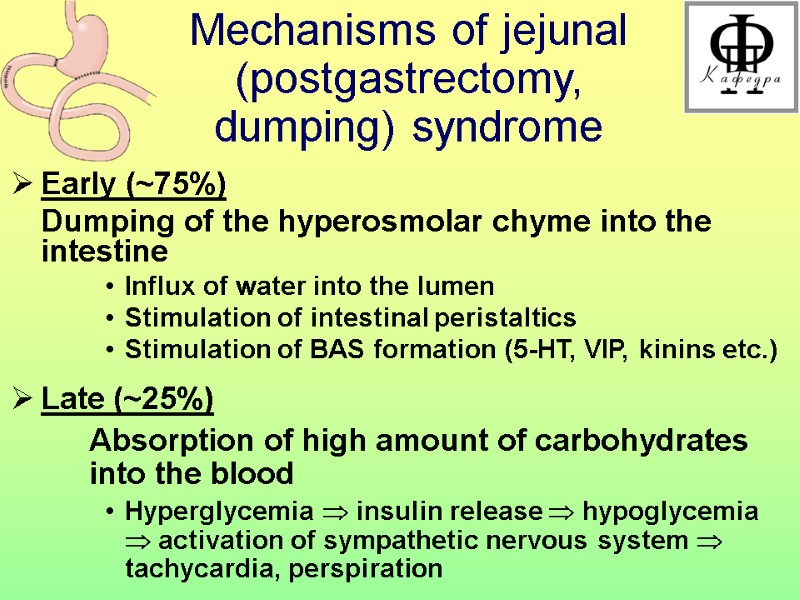
11842-pathophysiology_of_the_stomach.ppt
- Количество слайдов: 24
 Pathophysiology of gastro-intestinal tract
Pathophysiology of gastro-intestinal tract
 Gastro-intestinal tract Organs of oral cavity Esophagus Stomach Small and large intestine Secretory function of salivary glands, liver, pancreas Neurohormonal regulation
Gastro-intestinal tract Organs of oral cavity Esophagus Stomach Small and large intestine Secretory function of salivary glands, liver, pancreas Neurohormonal regulation
 Major processes in GIT nutrition digestion, absorption movement Salivary glands absorption Vena cava rectum stomach esophagus Colon intestine secretion digestion motility
Major processes in GIT nutrition digestion, absorption movement Salivary glands absorption Vena cava rectum stomach esophagus Colon intestine secretion digestion motility
 Physiology of the stomach пищевод дно Pyloric sphincter двенадцатиперстная кишка антральный отдел (секреция слизи, пепсиногена, гастрина) isthmus Parietal cells Smooth muscle cells G-cells Chief cells cells тело (секреция слизи, пепсиногена, HCl)
Physiology of the stomach пищевод дно Pyloric sphincter двенадцатиперстная кишка антральный отдел (секреция слизи, пепсиногена, гастрина) isthmus Parietal cells Smooth muscle cells G-cells Chief cells cells тело (секреция слизи, пепсиногена, HCl)
 Antral G-cell Parietal cell Gastrin Н+ secretion К+,H+ АТФase CNS Acetylcholine Antral receptor Local reflex Histamine Acetylcholine Stretch Parietal receptor Food (view, smell, test) Regulation of gastric secretion
Antral G-cell Parietal cell Gastrin Н+ secretion К+,H+ АТФase CNS Acetylcholine Antral receptor Local reflex Histamine Acetylcholine Stretch Parietal receptor Food (view, smell, test) Regulation of gastric secretion
 Mechanisms of gastric hypersecretion Stimulation: neurogenic (vagotonia), hormonal (gastrin, histamine, ↑Ca2+ in hyperparathyroidism…) Failure of inhibitory mechanisms (antral, duodenal) Hyperplasia of the gastric glands
Mechanisms of gastric hypersecretion Stimulation: neurogenic (vagotonia), hormonal (gastrin, histamine, ↑Ca2+ in hyperparathyroidism…) Failure of inhibitory mechanisms (antral, duodenal) Hyperplasia of the gastric glands
 Gastrinoma (Zollinger-Ellison syndrome) Marked gastric hypersecretion Diarrhea Abdominal pain Peptic ulcer(s) of upper GI tract Gastro-esophageal reflux Gastrin-secreting tumor of the duodenum (75%), pancreas (24%), stomach, liver, ovary (1%).
Gastrinoma (Zollinger-Ellison syndrome) Marked gastric hypersecretion Diarrhea Abdominal pain Peptic ulcer(s) of upper GI tract Gastro-esophageal reflux Gastrin-secreting tumor of the duodenum (75%), pancreas (24%), stomach, liver, ovary (1%).

 Pathogenic consequences of gastric hypersecretion Disorders of gastric motility (hypercontraction) Disorders of digestion Hyperkinesia Disorders of water-electrolyte and acid-base balance Development of acid-dependent diseases Erosion Acute ulcer Chronic ulcer mucosa Submucous layer Muscle layer Serous
Pathogenic consequences of gastric hypersecretion Disorders of gastric motility (hypercontraction) Disorders of digestion Hyperkinesia Disorders of water-electrolyte and acid-base balance Development of acid-dependent diseases Erosion Acute ulcer Chronic ulcer mucosa Submucous layer Muscle layer Serous
 mucus bicarbonate PG Е2 Adequate blood flow HCl pepsin Bile acids Helicobacter рylori agressive Aggressive and protective factors of gastric juice amylin protective
mucus bicarbonate PG Е2 Adequate blood flow HCl pepsin Bile acids Helicobacter рylori agressive Aggressive and protective factors of gastric juice amylin protective
 Helicobacter pylori
Helicobacter pylori
 The role of Helicobacter pylori Helicobacter pylori urease urea ammonia Increase of pH in antrum Gastrin production Hyperproduction of НСl Increase of IFN , TNF apoptosis, slowing of regeneration and reparation Antral gastritis B, ulcer Risk of cancer Cytiotoxic effect cytotoxines (Vac A, Cag A…) Injury of epithelium Infiltration with neutrophils
The role of Helicobacter pylori Helicobacter pylori urease urea ammonia Increase of pH in antrum Gastrin production Hyperproduction of НСl Increase of IFN , TNF apoptosis, slowing of regeneration and reparation Antral gastritis B, ulcer Risk of cancer Cytiotoxic effect cytotoxines (Vac A, Cag A…) Injury of epithelium Infiltration with neutrophils

 Ulceroprotective effect of amylin Inhibition of gastric secretion Stimulation of production of mucus Acceleration of healing of mucosa
Ulceroprotective effect of amylin Inhibition of gastric secretion Stimulation of production of mucus Acceleration of healing of mucosa
 Pathogenesis of gastro-esophageal reflux disease (GERD) Motor dysfunction of the lower esophageal sphincter Gastro-esophageal reflux Decreased mucosal resistance Increase in intragastric pressure Decreased esophageal clearance Gravity Esophageal peristaltics Saliva Renewal of the epithelium
Pathogenesis of gastro-esophageal reflux disease (GERD) Motor dysfunction of the lower esophageal sphincter Gastro-esophageal reflux Decreased mucosal resistance Increase in intragastric pressure Decreased esophageal clearance Gravity Esophageal peristaltics Saliva Renewal of the epithelium
 Mechanisms of gastric hyposecretion Disorders of regulation (neurogenic, hormonal) Atrophy of mucosa (autoimmune gastritis) Resection of the stomach
Mechanisms of gastric hyposecretion Disorders of regulation (neurogenic, hormonal) Atrophy of mucosa (autoimmune gastritis) Resection of the stomach
 Induction of autoimunity against parietal cells
Induction of autoimunity against parietal cells
 Mechanisms of immune-mediated parietal cell death leading to gastric atrophy
Mechanisms of immune-mediated parietal cell death leading to gastric atrophy
 Complications of gastric hyposecretion Disorders of protein digestion Hypokinesia Disorders in barrier function Disorders of iron and vitamin В12 absorption Disorders of intestinal secretion and digestion
Complications of gastric hyposecretion Disorders of protein digestion Hypokinesia Disorders in barrier function Disorders of iron and vitamin В12 absorption Disorders of intestinal secretion and digestion
 Increased gastric motility (gastric hyperkinesia) Neurogenic Increased production of НСl, gastrin, motilin … Hypercalcemia Pylorostenosis Complications: Decrease volume adaptation Increase in intragastric pressure Increased tone of the stomach Dyspepsia
Increased gastric motility (gastric hyperkinesia) Neurogenic Increased production of НСl, gastrin, motilin … Hypercalcemia Pylorostenosis Complications: Decrease volume adaptation Increase in intragastric pressure Increased tone of the stomach Dyspepsia
 Decrease of gastric motility Neurogenic - reflex gastroparesis - authonomic neuropathy (diabetes, alcoholism) - vagotomia Humoral - hyposecretion of НCL - increased production of HCl, GIP, amylin… Disorders of smooth muscle cell metabolism - anorexia - chronic intoxication - hypokalemia - ischemia
Decrease of gastric motility Neurogenic - reflex gastroparesis - authonomic neuropathy (diabetes, alcoholism) - vagotomia Humoral - hyposecretion of НCL - increased production of HCl, GIP, amylin… Disorders of smooth muscle cell metabolism - anorexia - chronic intoxication - hypokalemia - ischemia
 The passage of chyme through GI tract in normal conditions (A) and after resection of stomach (B) A B
The passage of chyme through GI tract in normal conditions (A) and after resection of stomach (B) A B
 The consequences of stomach resection Disorders in reservoir function of the stomach Decreased number of secretory cells (achlorhydria) Vitamin B12 deficiency → anemia Disturbance of fractional influx of chyme into the duodenum Disturbances in the regulation of secretory function of pancreas and liver Accelerated passage of chyme through the small intestine
The consequences of stomach resection Disorders in reservoir function of the stomach Decreased number of secretory cells (achlorhydria) Vitamin B12 deficiency → anemia Disturbance of fractional influx of chyme into the duodenum Disturbances in the regulation of secretory function of pancreas and liver Accelerated passage of chyme through the small intestine
 Mechanisms of jejunal (postgastrectomy, dumping) syndrome Early (~75%) Dumping of the hyperosmolar chyme into the intestine Influx of water into the lumen Stimulation of intestinal peristaltics Stimulation of BAS formation (5-HT, VIP, kinins etc.) Late (~25%) Absorption of high amount of carbohydrates into the blood Hyperglycemia insulin release hypoglycemia activation of sympathetic nervous system tachycardia, perspiration
Mechanisms of jejunal (postgastrectomy, dumping) syndrome Early (~75%) Dumping of the hyperosmolar chyme into the intestine Influx of water into the lumen Stimulation of intestinal peristaltics Stimulation of BAS formation (5-HT, VIP, kinins etc.) Late (~25%) Absorption of high amount of carbohydrates into the blood Hyperglycemia insulin release hypoglycemia activation of sympathetic nervous system tachycardia, perspiration

